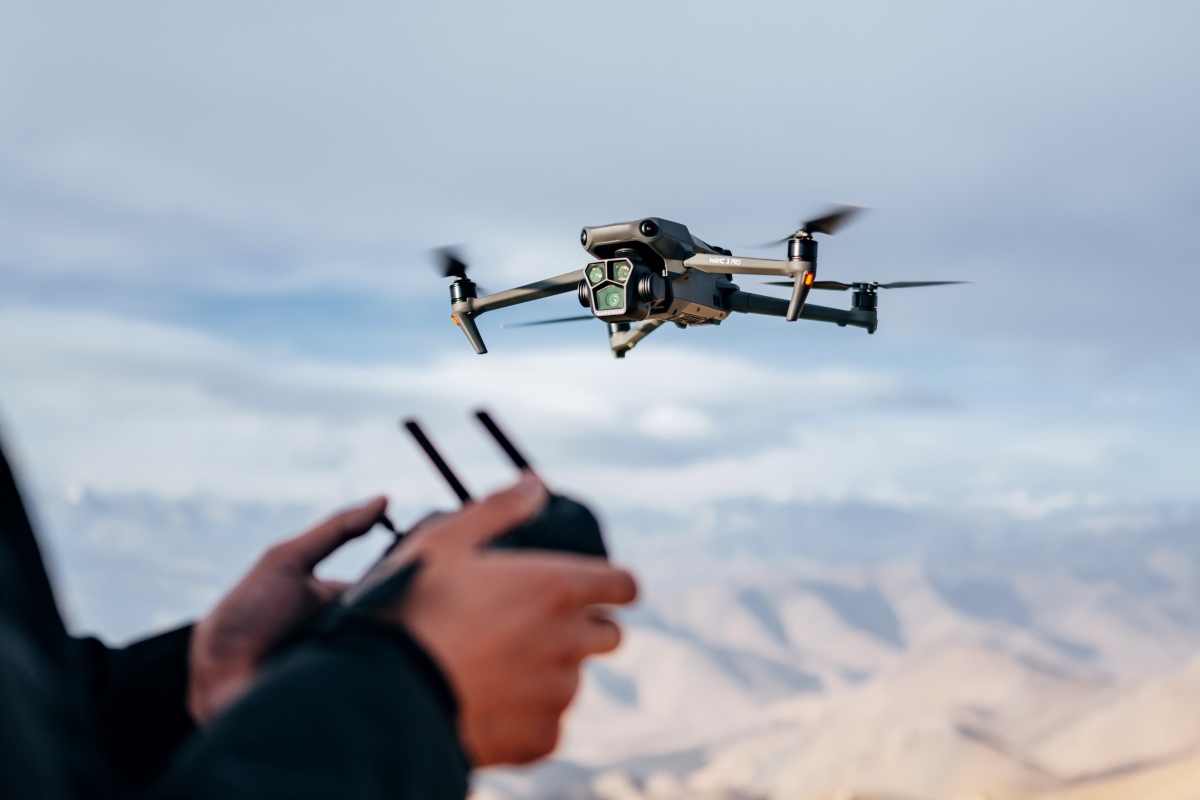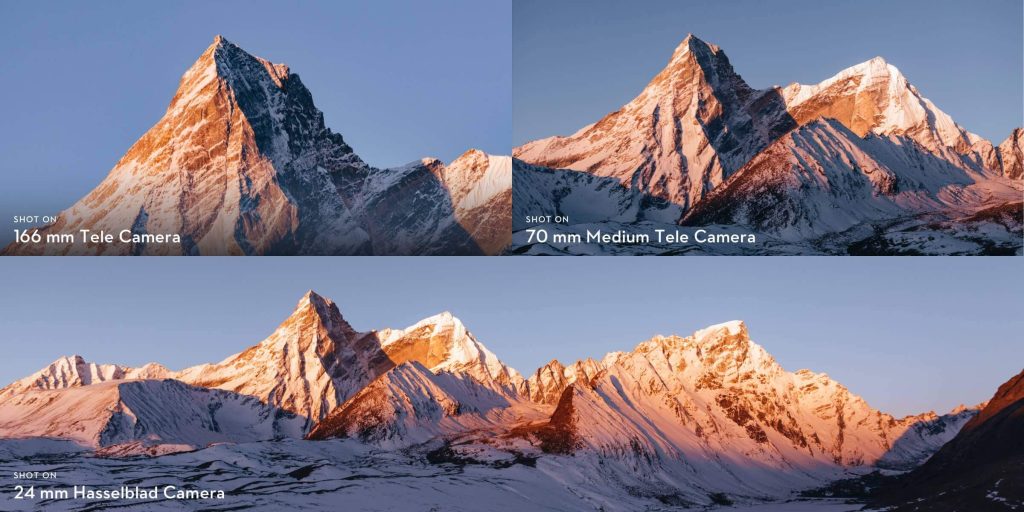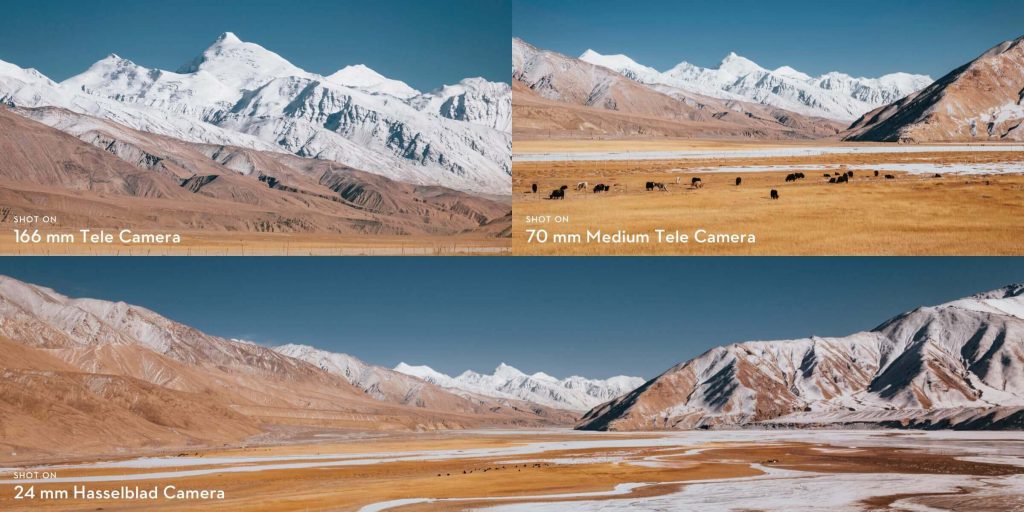
The just-released Mavic 3 Pro is the first triple-camera drone in the DJI’s flagship Mavic 3 series. As the tech giant begins shipping the new Mavic 3 Pro to customers, here’s a look at how DJI’s latest drone matches up against the original Mavic 3 and Mavic 3 Classic.
Mavic 3 was first announced in November 2021, and it has been one of the most successful flagship portable drones from DJI. Mavic 3 Classic joined the lineup a year later as a more affordable alternative, while the new Pro version (which is priced the same as the OG Mavic 3) has begun shipping out to customers only today.
With over 40 minutes of max flight time, all three drones can shoot stunning images courtesy of their powerful Hasselblad main camera. And yet, all models are equipped differently. Take a look at the camera specs below:
| DJI Mavic 3 Pro | DJI Mavic 3 | DJI Mavic 3 Classic |
| 4/3 CMOS Hasselblad Camera 1/1.3-inch CMOS Medium Tele Camera 1/2-inch CMOS Tele Camera | 4/3 CMOS Hasselblad Camera 1/2-inch CMOS Tele Camera | 4/3 CMOS Hasselblad Camera |
| Hasselblad Camera: 20 MP Medium Tele Camera: 48 MP/12 MP Tele Camera: 12 MP | Hasselblad Camera: 20 MP Tele Camera: 12 MP | 20 MP |
| Hasselblad Natural Colour Solution (HNCS)/D-Log/D-Log M/HLG | Normal/D-Log/HLG | Normal/D-Log/HLG |
As DJI explains, Mavic 3 Classic has one 4/3 CMOS Hasselblad camera, and it does not support the gimbal lock function. Mavic 3, meanwhile, has two cameras: in addition to a Hasselblad camera, it has a 162 mm tele camera and supports a gimbal lock. The new Mavic 3 Pro is the only DJI consumer drone with three cameras. In addition to a Hasselblad camera and an upgraded 166 mm tele camera, it has a unique 70 mm tele camera.
And while a 70 mm tele camera may seem minor, it significantly benefits photographers. This new camera captures footage with more substantial spatial compression, which helps to better highlight the subject in complex environments and emphasizes the subject’s relationship with its surroundings.
Moreover, the Mavic 3 Pro series has the added benefit of supporting various color modes, including Hasselblad Natural Color Solution (HNCS), D-Log, D-Log M, and HLG. These color modes preserve greater image details and simplify color grading during post-production.
The following images depict the capabilities of Mavic 3 Pro’s three cameras quite nicely:



A huge advantage for Mavic 3 Pro users is, to get smoother and more natural transitions by switching between different focal lengths, they only need to tap on the Fly app screen. As such, capturing richer storytelling angles and making footage more cinematic becomes effortless.
Read: DJI online store stops selling OG Mavic 3 post Mavic 3 Pro release
Coming to drone design, the thing to know is that the Mavic 3 Pro is slightly heavier than Mavic 3 Classic and Mavic 3. And that is expected because of the newly added medium tele camera. However, the Pro version still maintains a portable size and design, meaning you can easily put it in a backpack or travel bag. Here are the design specs at a glance:
| DJI Mavic 3 Pro | DJI Mavic 3 | DJI Mavic 3 Classic |
| 958 g | 895 g | 895 g |
| Folded (without propellers): 231.1×98×95.4 mm Unfolded (without propellers): 347.5×290.8×107.7 mm | Folded (without propellers): 221×96.3×90.3 mm Unfolded (without propellers): 347.5×283×107.7 mm | Folded (without propellers) 221×96.3×90.3 mm Unfolded (without propellers) 347.5×283×107.7 mm |
| DJI RC | DJI RC-N1 | DJI RC-N1 |
It’s also worth pointing out that the standard version of these drones does not ship with the same remote controller. While the Mavic 3 Pro standard version includes DJI RC, the Mavic 3 and Mavic 3 Classic drones originally include a DJI RC-N1 controller.
Compared to RC-N1, the biggest benefit that comes with DJI RC is its integrated 5.5-inch HD display screen. This allows you to use the Mavic 3 Pro immediately without requiring a smartphone connection. The DJI RC display is designed to provide clear viewing even in direct sunlight and comes pre-installed with the DJI Fly app.
In the meantime, you should know that the flight performance, video transmission, and obstacle sensing on the three drones are identical. Take a look at the comparison table below:
| DJI Mavic 3 Pro | DJI Mavic 3 | DJI Mavic 3 Classic |
| Omnidirectional obstacle sensing | Omnidirectional obstacle sensing | Omnidirectional obstacle sensing |
| DJI O3+: Up to 15 km 1080p/60fps live feed | DJI O3+: Up to 15 km 1080p/60fps live feed | DJI O3+: Up to 15 km 1080p/60fps live feed |
| 6,000m max takeoff altitude | 6,000m max takeoff altitude | 6,000m max takeoff altitude |
All three models have multiple sensing cameras with a broad detection range, enabling the drone to respond to obstacles earlier. Even in well-lit environments, the Mavic 3 series can avoid obstacles with greater speed and smoothness, ensuring stable footage capture during lateral or backward flight while maintaining safety.
So, in a nutshell, Mavic 3 Pro would be your ideal choice if you are a pro-level creator looking for an attractive deal to get three cameras on one drone. And if you want to take advantage of the powerful 4/3 CMOS Hasselblad camera on a budget, you should go with the Mavic 3 Classic. The OG Mavic 3, with no price or feature advantage at present, is not recommended for new users.
Read: New firmware makes DJI Mavic 3 drone series compatible with FPV goggles
FTC: We use income earning auto affiliate links. More.






Comments